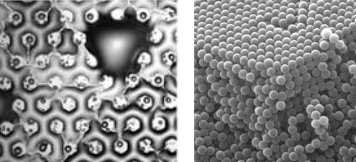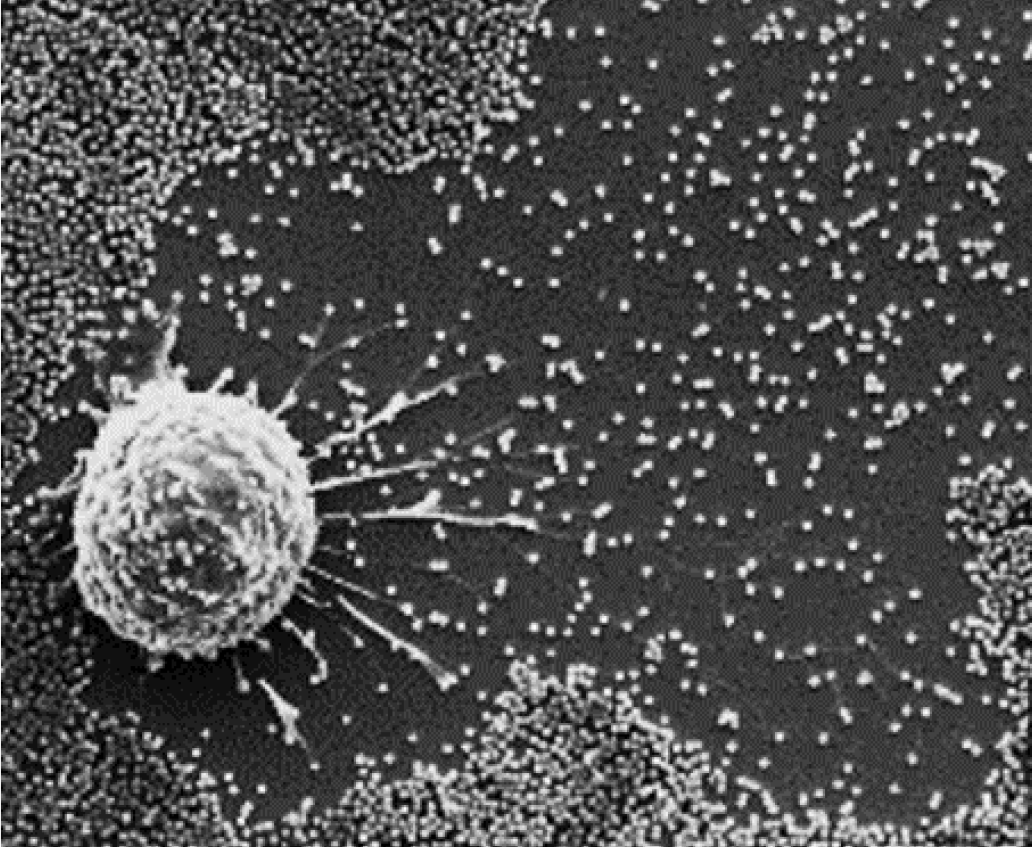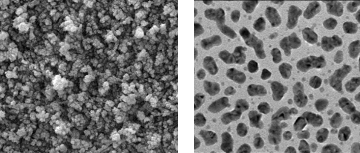Accueil » Les axes thématiques » I2M Interfaces et Matériaux Multidimensionnels »
Wetting and assembly of nano-microparticles
Wetting and assembly of nano-microparticles
Laurent Vonna laurent.vonna@uha.fr
Mouillage de substrats texturés
- Contrôle de la mouillabilité : Mise en évidence de la capacité à contrôler la mouillabilité des surfaces par texturation, en utilisant notamment des techniques telles que le traitement par laser femtoseconde.
- Hystérésis de l’angle de contact et comportement des gouttes : Étude de la relation entre la texture de surface et l’hystérésis de l’angle de contact, le piégeage et la structuration des gouttes.
- Tensiométrie par lame de Wilhelmy : Utilisation de la méthode de la lame de Wilhelmy pour caractériser les propriétés de mouillage de surfaces hautement répulsives aux liquides et mesurer les forces d’ancrage de la triple ligne.
- Adhésion bactérienne : Étude de l’influence de la mouillabilité de la surface sur l’adhésion bactérienne, avec identification du rôle du piégeage d’air et de la texture de surface.

Assemblage et stabilité des assemblages de nano- et microparticules
- Modes de croissance des revêtements métalliques : Étude des mécanismes de croissance des nanoparticules métalliques sur des substrats élastomères, tels que le polydiméthylsiloxane (PDMS), et de l’influence des propriétés du substrat sur la morphologie du revêtement.
- Revêtements à base de particules : Développement et caractérisation de revêtements à base de particules pour diverses applications, avec contrôle de leur morphologie, de leur stabilité et de leurs propriétés fonctionnelles.
- Auto-assemblage : Utilisation de techniques d’auto-assemblage pour créer des structures ordonnées à partir de nanoparticules et de microparticules, avec étude des facteurs influençant leur formation et leur stabilité.

Propriétés des élastomères
- Propriétés d’adhésion : Étude des propriétés d’adhésion des élastomères, en particulier la formation de contacts entre des hémisphères élastiques mous et des substrats microstructurés.
- Croissance des revêtements métalliques : Analyse des mécanismes de croissance des nanoparticules métalliques sur des substrats élastomères, incluant l’influence des propriétés du substrat et des conditions de dépôt.
- Densité de réticulation : Détermination de la densité de réticulation des élastomères par des expériences de gonflement et des tests mécaniques, et mise en relation avec leur comportement macroscopique et leurs propriétés mécaniques.
- Propriétés adhésives : Exploration des propriétés adhésives des élastomères, notamment leur capacité à adhérer à diverses surfaces et à résister aux contraintes mécaniques.
- Propriétés de mouillage : Étude des propriétés de mouillage des élastomères, incluant leur capacité à repousser ou retenir des liquides, ainsi que l’influence de la texture de surface et de la composition chimique.
- Texturation : Développement de méthodes de texturation des élastomères par traitement au laser femtoseconde, permettant de contrôler leur mouillabilité, leur adhésion bactérienne et d’autres propriétés.


